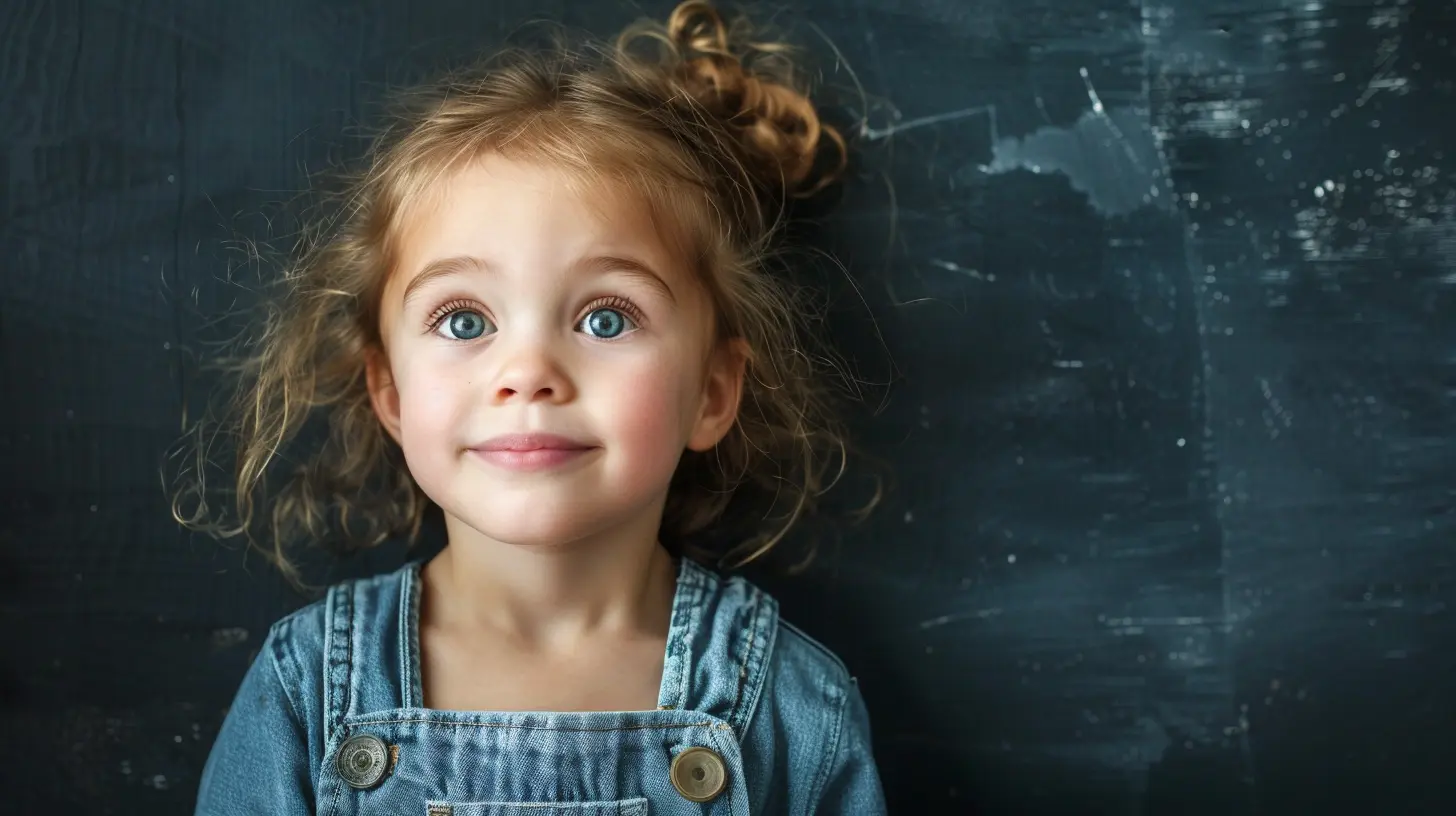How to Encourage Responsibility Through Goal Setting
17 August 2025
Let’s face it—parenting isn’t for the faint of heart. We juggle chores, school runs, homework meltdowns, and the occasional snack war. Amid all that chaos, one big question lingers: "How do I raise responsible kids?"
One powerful (and surprisingly simple) way is by teaching them to set and follow through on their goals. Goal setting isn't just for athletes or CEOs—it’s a life skill that builds responsibility, ownership, and confidence in kids.
So grab a coffee, kick back, and let’s talk about how to lay the groundwork for responsibility by using something as empowering (and manageable!) as goal setting.
Why Goal Setting Builds Responsibility in Kids
Think about it for a second: when your child sets a goal—like finishing their homework before dinner or saving up for a toy—they’re doing more than just ticking off a task. They’re learning to plan, stay focused, and manage their time.That’s responsibility in action.
And here’s the beauty of it: when kids experience the pride of hitting a goal, they gain a sense of control over their actions. It’s like handing them the keys to their own little corner of the world.
Start with the “Why”
Before diving into how to help your kids set goals, start by explaining why it even matters. Kids are more likely to buy in when they understand the purpose.Here’s a kid-friendly way to put it:
"You know how in video games you have levels to beat? Goals are like real-life levels. When you beat one, you get stronger for the next one."
Boom. Instant connection.
Keep it Age Appropriate
A 5-year-old’s goal will look very different from a teenager’s. The key is to keep it simple, relatable, and achievable based on their age.For younger kids (ages 4–7):
- Clean up toys after playtime.- Brush teeth before bed without reminders.
- Pick out clothes for the next day.
For older kids (ages 8–12):
- Finish homework before screen time.- Make the bed every morning.
- Read for 20 minutes each night.
For teens:
- Stick to a study schedule.- Save a certain amount of allowance each month.
- Take responsibility for doing their laundry.
Choose goals that match their maturity level. Small wins build the confidence they need to tackle bigger challenges down the road.
SMART Goals Aren’t Just for Adults
Yep, those nerdy workplace acronyms can actually be super helpful for kids too. Introduce the idea of SMART goals in a fun, digestible way.- Specific – What exactly do you want to do?
- Measurable – How will you know you did it?
- Achievable – Is it realistic?
- Relevant – Why does it matter to you?
- Time-bound – When will you finish it?
Try it together. Say your child wants to “do better in math.” That’s too vague. With SMART, it becomes:
“I want to practice math for 15 minutes each day after school for the next two weeks.”
Now that’s a goal with structure and meaning.
Include Your Kids in the Process
You know what makes goal setting even more effective? When kids feel ownership over it.Don’t just hand them a goal; let them brainstorm with you. Ask open-ended questions like:
- "What’s something you’ve been wanting to get better at?"
- "Is there something you’d feel proud of accomplishing this week?"
When kids help create the goal, they’re more invested and more likely to follow through.
Break Big Goals into Bite-Sized Steps
Ever tried cleaning the entire house in one go? Overwhelming, right? Kids feel the same way about big goals.Instead, break goals into small, manageable chunks. For example, if the goal is to "keep their room clean all week", break it into:
- Day 1: Make the bed
- Day 2: Put clothes in the hamper
- Day 3: Pick up toys
Each little step feels doable. They’ll build momentum, and before you know it, they’re halfway to their goal—or better yet, developing a habit.
Create Visual Cues and Track Progress
Kids are visual. A simple chart, sticker tracker, or even a color-coded calendar can make a world of difference. It makes goals feel tangible and progress visible.Let your child decorate their own goal chart. You’d be surprised how motivated they become when there’s a sparkly unicorn sticker waiting for them.
You can even turn it into a family “goal wall”. Everyone (yes, even you!) writes their goal for the week on a board. It’s a great way to build accountability—and a little friendly competition.
Celebrate Progress (Not Just Results)
Let’s get real for a moment: not every goal will end in success. And that’s okay.What really matters is the effort and growth. Praise your child not only when they reach a goal but also when they:
- Stick to the plan
- Learn a new strategy
- Push through a tough day
Celebrating effort builds resilience. It teaches them that setbacks are just part of the journey—not the end of the road.
Use Goal Setting to Teach Problem Solving
Here’s a life hack: goal setting and problem solving go hand in hand.When your child struggles to meet a goal, resist the urge to fix it for them. Instead, guide them through these questions:
- What got in the way?
- What could you try differently next time?
- What would help you stick to your plan?
This turns the whole process into a learning opportunity. Over time, they’ll start troubleshooting on their own—hello, responsibility.
Make It a Habit
Goal setting shouldn’t be a once-a-year New Year's Resolution kind of thing. Make it part of regular conversations. Sunday night family meetings? Perfect time. Bedtime chats? Even better.Ask casually, "What’s one small thing you want to work on this week?” Keep it light. Keep it fun.
The more consistent you are, the more natural it becomes for your child to think in terms of goals and responsibility.
Be Their Cheerleader (Not Their Drill Sergeant)
Let’s be honest, it’s easy to slip into “just do it already” mode. But when it comes to responsibility, encouragement goes a lot farther than commands.Stay positive. Use words like:
- "I believe in you."
- "You’ve been working so hard on this!"
- "I’m proud of the effort you’re putting in."
Your voice becomes their internal voice over time. Let it be one that builds them up, not one that knocks them down.
Model It Yourself
This one’s critical, parents. If we want kids to be responsible, we’ve gotta walk the walk.Talk about your own goals—big or small. Maybe you’re setting a goal to drink more water, get to bed earlier, or spend less time on your phone.
Share your wins, your struggles, and the strategies you’re using. It makes goal setting feel like a normal part of life... not some weird “grown-up thing” you’re forcing on them.
When Goals Fail (Because Sometimes They Will)
Even with the best intentions, goals don’t always pan out. But guess what? That’s real life. And real life is exactly what we’re preparing our kids for.When a goal flops, approach it with curiosity, not criticism. Ask:
- "What do you think happened?”
- "What could we try differently next time?"
Keep the vibe relaxed. Emphasize that failure is part of learning. This helps kids bounce back without feeling ashamed or defeated.
Make Responsibility Feel Empowering, Not Burdensome
Responsibility gets a bad rap. It sounds heavy. Boring. Maybe even a little scary.But when kids start taking ownership of their actions through goal setting, they begin to feel more capable. More independent. More in control.
And who doesn’t want that for their kids?
Think of it like riding a bike. At first, they wobble. You’re right there, holding the seat. But with practice, they find balance. They gain speed. And pretty soon, they’re pedaling into confidence—and into life—with responsibility riding right alongside them.
Final Thoughts
Goal setting might seem like a small thing. But when done right, it's a powerful tool that helps kids grow into responsible, thoughtful, and driven individuals. It’s not about perfection. It’s about progress, self-awareness, and learning how to navigate the real world, one small step (and sticker chart) at a time.Start small. Stay consistent. And be their greatest cheerleader.
Because helping your child grow into a responsible adult? That’s the ultimate parental goal.
all images in this post were generated using AI tools
Category:
Teaching ResponsibilityAuthor:

Liam Huffman
Discussion
rate this article
1 comments
Katherine McMahan
This article offers valuable insights on fostering responsibility in kids through goal setting. Practical tips and relatable examples make it easy for parents to guide their children toward achieving their aspirations with confidence. Great read!
August 23, 2025 at 3:25 PM

Liam Huffman
Thank you for your kind words! I'm glad you found the insights and tips helpful for guiding kids in their goal-setting journey.


